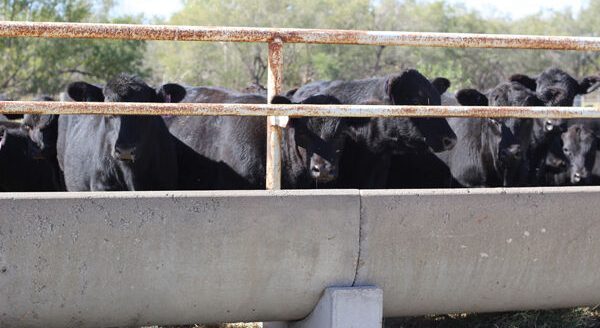In a recent National Cattlemen’s Beef Association webinar, Dr. Denise Bonilla, DVM, and cattle fever tick eradication program manager at U.S. Department of Agriculture, discussed the Asian longhorned tick and its impacts on United States agriculture.
Known scientifically as Haemaphysalis longicornis, Asian longhorned ticks originated in northeast Asia and expanded into Australia and New Zealand. They were probably introduced to the U.S. in the last 10 to 15 years, but the first confirmed case was on a sheep in New Jersey in 2017. Asian longhorned ticks have been confirmed in Arkansas, Connecticut, Delaware, Georgia, Kentucky, Maryland, Missouri, New Jersey, New York, North Carolina, Ohio, Pennsylvania, Rhode Island, South Carolina, Tennessee, Virginia, and West Virginia. Bonilla said Virginia leads the count with 38 known infested counties.
The presence of this tick in the U.S. is particularly concerning because they are capable of asexual reproduction or parthenogenesis. This allows females to lay eggs without mating with male ticks therefore tick populations can increase much faster. One female can generate 1,000 to 2,000 eggs at one time, according to the USDA Animal and Plant Health Inspection Service. Asian longhorned ticks can transmit anaplasmosis, bovine theileriosis and babesiosis. Asian longhorned ticks are considered a possible vector for Severe Fever with Thrombocytopenia Syndrome Virus, which is an emerging infectious disease in China. Since the tick is not native to the U.S. researchers are not sure of this arachnid’s capabilities when it comes to carrying Lyme disease and Rocky Mountain Spotted Fever.
“These ticks vector protozoal, bacterial and viral pathogens to animals and humans,” Bonilla said. “There are good chances for this tick to potentially move into new areas and just because this tick hasn’t been confirmed in your state yet, it doesn’t mean that you’re not at risk of getting this tick where you live.”
Asian longhorned tick will infect and spread through wildlife hosts such as deer, raccoons, possums, foxes, rabbit, groundhogs, skunks, birds and mice. Bonilla said Asian longhorned ticks are comparative in size to the deer tick commonly seen in the High Plains.
“These ticks don’t really like humans, but they will bite people sometimes and we’re getting a lot of reports of larval ticks on kids that are playing outside,” she said. “We see a lot in dogs and its possible that they are moving ticks around when people travel with them.”
She said although it is not known exactly how the ticks were introduced to the U.S., based on the genetics of the ticks that have been collected, there have been at least three different introductions into this country.
“Cattle seem to be one of the favorite hosts for these ticks, but they have also been found on sheep, goats and pigs,” she said. “Whatever livestock you produce, you need to be on the lookout for this tick.”
Apart from vectoring disease, animals can die for exsanguination if enough are present. This means the ticks feed to the point where they drain the animal and they can’t live anymore.
“We’ve seen situations like this where the animals don’t seem to be sick when they die, they just have thousands and thousands of ticks on them,” Bonilla explained. “The good news is we haven’t seen any pesticide resistance so far. Not all approved tick repellants or treatment for animals state they will work against Asian longhorned ticks, but all repellents will still be effective against this pest.”
Lacey Vilhauer can be reached at 620-227-1871 or [email protected].




